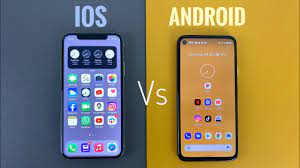How is OTT in the post-COVID world the key to open up new business opportunities?
The typical entertainment drivers are stopped with a social distance which becomes the lifestyle and losses a repeat phenomenon. Movie theatres, which are no longer complex traps, are mainly forced to remain indoors by the increasing COVID-19 crisis. Whereas the severe pandemic provides audiences with hours of independence and loneliness, OTT (Over the Top) does not miss out on it.
In the middle of the COVID-19, more and more visitors have used various OTT channels to raise visibility by 30 percent. A new study notes that in 2020 the world demand for OTT hit $161.37 trillion. The demand grew by nearly 55% in comparison with 2019 at a CAGR. On-demand streaming is a recent favorite for people, and even in the post-COVID-19 era, this infatuation will not end soon.
The primary question is how OTT shapes itself in the middle of the continuous change in paradigm. When consumers follow OTT platforms at an incredible pace, companies also have a tremendous opportunity to fill their success stories. Companies must align their marketing approach to OTT to identify new applications, create deeper consumer partnerships, and break the competitiveness curve. For example, some of the market advantages are given briefly below.
- Improved consumer value
- Strong publicity and additional sales sources
- Improved market recognition and positioning
- Increased supply and monetization of material
- Creativity via video APIs continued
- Consumer involvement increased
- Customized user service
- Adaptation to business strategy communications
Why does OTT Platform Development Turn to Be of Critical Importance for Businesses?
It is not irrational that OTT prevails over all traditional methods for reaching or placing prospective buyers more accordingly. And organizations around sectors are still trying to create custom OTT applications to take advantage of the ability to go competitive routes. Let’s understand why.
- Ad-Supported OTT Platforms
OTT platform has an exquisite standard. It allows to cache and purge, collect multimedia contents, handle content assets, and more. Briefly, ingestion automation significantly decreases running costs and refines workflow across endpoints.
2. Continuously Increasing OTT Users
OTT will be the turn-key to meet a broader user base of over 3.5 trillion members of the global population using smartphones. The number of OTT users in the United States alone, exceeding 198 million dollars by 2021, Statista reports. There are 180 million users in the Southeast Asian region when we search related facts. It spends 8 trillion hours a month on many channels for streaming. Besides, Forbes says it lost 6 million consumers and more than 53 million in total in 2019 alone, with traditional television and satellite broadcasters lost.
3. Rising Demand for Omnichannel Experiences
Intelligent devices and super-fast internet networking are available to users of the digital era and trigger the need for all-around experience and access to media content. OTT-apps can view content anywhere on almost any compatible smartphone, whether audio or video. A study states that while thousands of year-old OTT customers continue to watch content on mobile devices, over 60 million people use TV sets in the next five years. May it be those streamers or intelligent televisions and tablets, users of the modern era expect media materials to be streamed anywhere and from both sides.
4. Consumers Want Content to Be Personalized
The development of OTT applications will allow marketers to provide customers with customized content. OTT networks deliver total agility, unlike conventional news media. More and more businesses are contacting suppliers of OTT app production to reshape their interest in prospective clients. Streaming on-demand services combine interruptive technical powers, for example, artificial intelligence (AI), mechanical learning (MA), analytics, cloud, IoT, etc. Companies will also create tailored content campaigns, bringing together data and architecture to cover a diverse range of their chosen language across OTT channels.
Should Businesses Build OTT Business Models in Pursuit of Content Monetization?
OTT has various application formats converged. It provides a one-stop platform covering diverse platforms, including theatre, history, discovery, life plays, short series, documentaries, programming for children, and films. To achieve content monetization, businesses need to continue building OTT models and gain additional advantages from a cyclical growth in digital usability. The following are some of the main reasons why firms should look forward without further ado to OTT growth.



